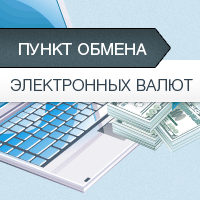What is the difference between Bitcoin and LoopRing?
Unlike other exchangers, the Loopring platform protocol and its decentralized nature eliminate the so-called “single point of failure”, namely: it prevents the appearance of a faulty component (hardware or software) that causes a global systеm error in the network.
Safe transactions: on the platform you can make an effective exchange of assets, which has no analogues in other exchanges.
How it works? The LoopRing network receives information and, after performing their checks, authorizes the change, which is carried out through a smart contract between the two participants.
There are other protocols for creating decentralized token exchanges, such as 0x, Ripple, or Bancor, but they have drawbacks and limitations. For example, the 0x network accepts only OTC orders, creating an obscure mechanism for competing with other exchanges and not having a systеm to protect miners.
At the same time, the Loopring network uses the technology of these platforms to provide new solutions for decentralized token exchanges: the LRC mining software itself, a cyclic algorithm that always looks for the best prices for cryptocurrency exchanges between different providers, etc.
Unlike many DEXs, LoopRing facilitates mining with a maximum number of coins far exceeding Bitcoin or Lightcoin: 1374 million against 21 million and 84, respectively.
How does the LoopRing network work?
Loopring is a decentralized protocol that runs on the Ethereum blockchain and uses its ERC20 token, on which its own LRC currency is based. He also integrates Ethereum smart contracts into his systеm to be able to trade with the rest of the ERC20 tokens.
These “smart contracts” are crucial because they are executed by themselves (without third-party intervention), which means that after writing the conditions, the probability of human error is practically zero. In addition, they work to perform actions such as calculating the exchange volumes and prices between two tokens, interacting with other smart contracts and the Loopring API (program interface), and updating orders in the database.
To provide better prices, the Loopring protocol allows miners to complete transactions with multiple tokens thanks to a round-robin or ring algorithm (called a “ring”). This algorithm receives an order to sell or buy (that is, how many tokens you want to sell / buy and in which cryptocurrency). Having received this information, the user can find the best value for money, in other words, in this network you can find the available pairs of cryptocurrencies.
LRC tokens currently have two applications on the platform: one as a transaction fee and as a reward to miners who help verify transactions. In the future, the Loopring team hopes to increase the commercial use of its currency to attract more users.
On the other hand, network nodes may be denied service according to their own criteria, which means that they can protect themselves if necessary. These sites also have the ability to track accounts that appear suspicious and act accordingly.
The user sends the transaction order to the Loopring.io smart contract through his wallet. This request simultaneously propagates to network nodes (called relays) outside the block chain.
Naturally, the nodes are responsible for updating the ledgers and, in this case, for transferring the order to the miners (Ring miners).
These miners help verify the transaction and find the best prices using a comparison systеm called “ring matching,” which works smoothly. The LoopRing network groups all orders into so-called “rings” containing 2-16 orders, with which you can satisfy all requests (if there are not enough coins for the user, the missing order is added to the next ring).
After the transaction is confirmed, the exchange is carried out as part of the Loopring smart contract and its blockchain.
Production
LoopRing coins can be mined, and therefore miners receive rewards in the form of LRC. This is due to the fact that these miners are responsible for finding the best prices for the transaction, in return they save a pre-agreed margin, fixed or provided to the user.
Where to store LoopRings coins?
The LoopRing platform has also developed its own wallet through which you can directly buy cryptocurrencies (ERC-20). It is available in the Loopr web version and for iOS mobile phones as a non-custodial wallet (Loopr iOS).
Since this is a standard Ethereum token, it is also available in most wallets that support ERC-20.
How to buy or get LoopRings?
1. Buy LRC: you can get LoopRings at some of the most famous exchangers in the world, such as Binance, Upbit, Bittrex and, of course, in your own dEX, either through your wallet or without using a private key with its version.
2. Get LRC: You can also get LRC as a reward, helping in mining processes.
Loopring in the future
The fact that Loopring is designed and programmed by Google developers and supported by NEO cryptocurrency will make people gain confidence in this asset, and in the future they may decide to invest in it and accept it as a payment method.
The long-term goal and, ultimately, the developers of the Loopring network is to increase the liquidity of cryptocurrencies and pave the way from the traditional financial systеm to a decentralized and fairer model of communication with consumers.


